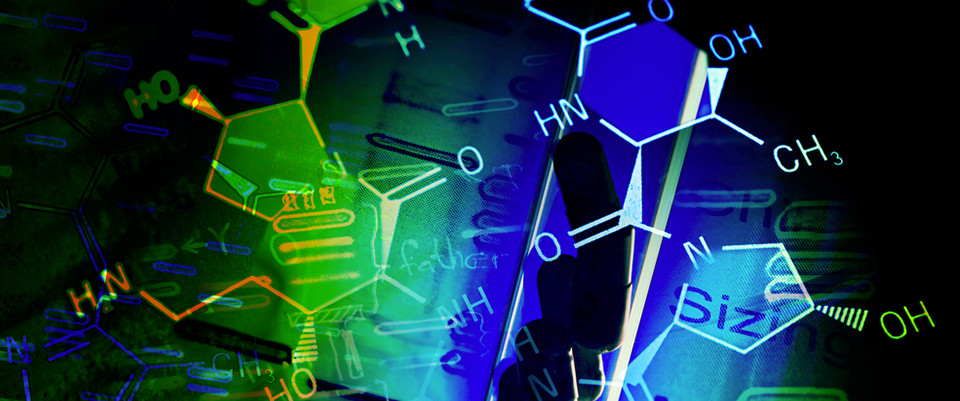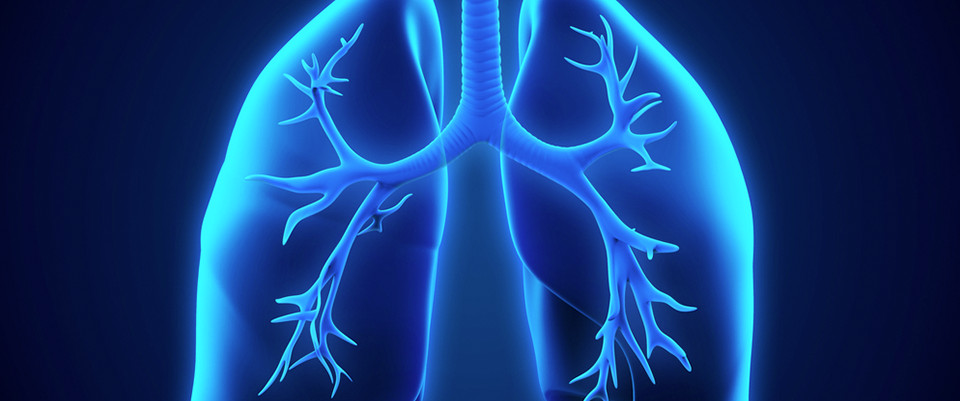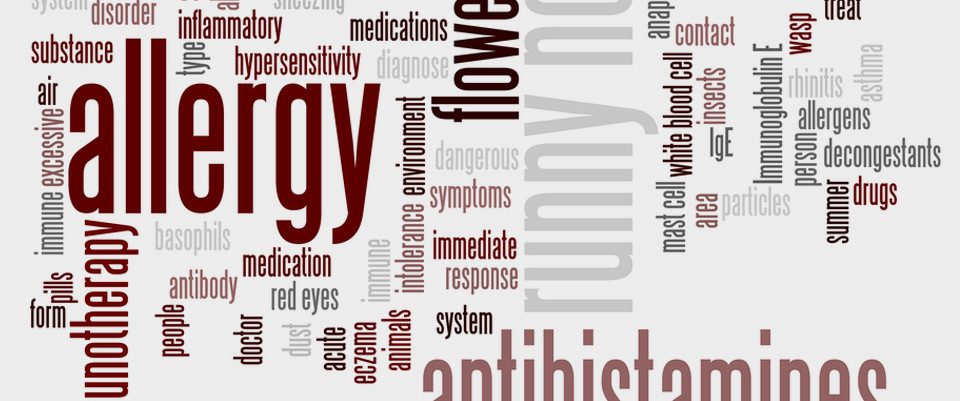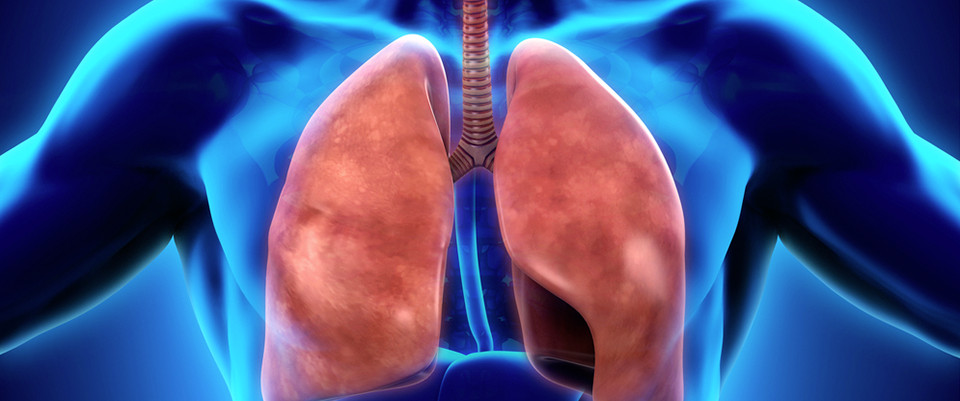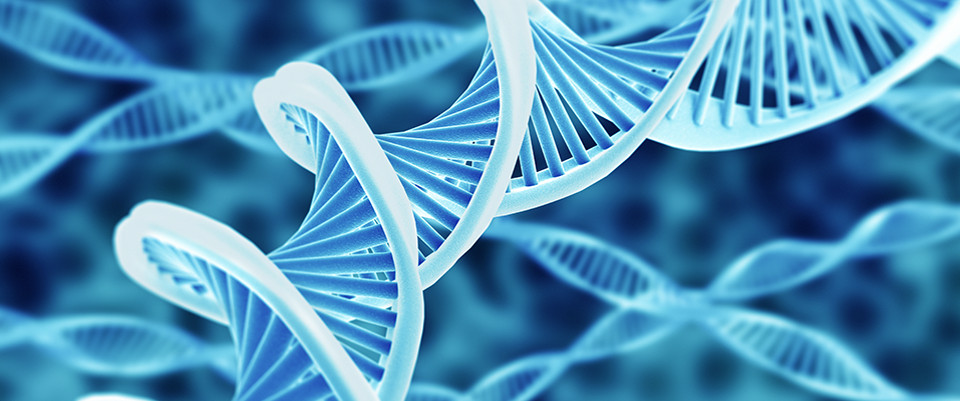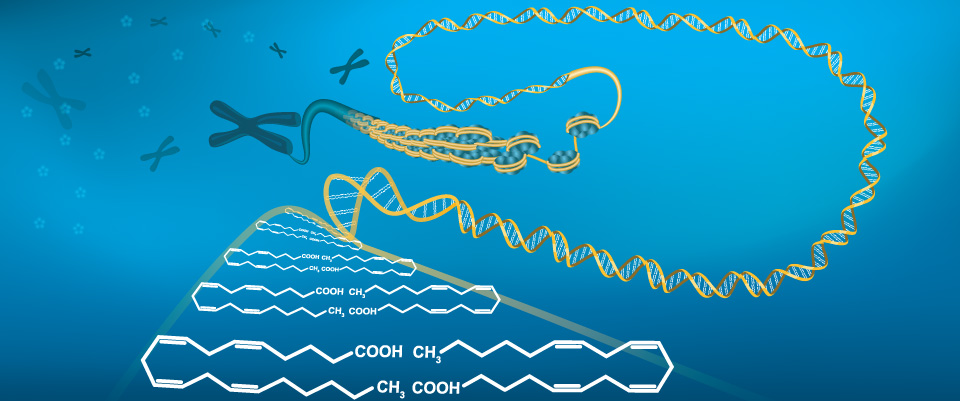PubMed
Reading and Writing the Human Glycocode
Annu Rev Biochem. 2024 Apr 26. doi: 10.1146/annurev-biochem-030122-044347. Online ahead of print.ABSTRACTThe complex carbohydrate structures decorating human proteins and lipids, also called glycans, are abundantly present at cell surfaces and in the secretome. Glycosylation is vital for biological processes including cell-cell recognition, immune responses, and signaling pathways. Therefore, the structural and functional characterization of the human glycome is gaining more and more interest in basic biochemistry research and in the context of developing new therapies, diagnostic tools, and biotechnology applications. For glycomics to reach its full potential in these fields, it is critical to appreciate the specific factors defining the function of the human glycome. Here, we review the glycosyltransferases (the writers) that form the glycome and the glycan-binding proteins (the readers) with an essential role in decoding glycan functions. While abundantly present throughout different cells and tissues, the function of specific glycosylation features is highly dependent on their context. In this review, we highlight the relevance of studying the glycome in the context of specific carrier proteins, cell types, and subcellular locations. With this, we hope to contribute to a richer understanding of the glycome and a more systematic approach to identifying the roles of glycosylation in human physiology.PMID:38669516 | DOI:10.1146/annurev-biochem-030122-044347
An osteoarthritis pathophysiological continuum revealed by molecular biomarkers
Sci Adv. 2024 Apr 26;10(17):eadj6814. doi: 10.1126/sciadv.adj6814. Epub 2024 Apr 26.ABSTRACTWe aimed to identify serum biomarkers that predict knee osteoarthritis (OA) before the appearance of radiographic abnormalities in a cohort of 200 women. As few as six serum peptides, corresponding to six proteins, reached AUC 77% probability to distinguish those who developed OA from age-matched individuals who did not develop OA up to 8 years later. Prediction based on these blood biomarkers was superior to traditional prediction based on age and BMI (AUC 51%) or knee pain (AUC 57%). These results identify a prolonged molecular derangement of joint tissue before the onset of radiographic OA abnormalities consistent with an unresolved acute phase response. Among all 24 protein biomarkers predicting incident knee OA, the majority (58%) also predicted knee OA progression, revealing the existence of a pathophysiological "OA continuum" based on considerable similarity in the molecular pathophysiology of the progression to incident OA and the progression of established OA.PMID:38669329 | DOI:10.1126/sciadv.adj6814
A vast repertoire of secondary metabolites potentially influences community dynamics and biogeochemical processes in cold seeps
Sci Adv. 2024 Apr 26;10(17):eadl2281. doi: 10.1126/sciadv.adl2281. Epub 2024 Apr 26.ABSTRACTIn deep-sea cold seeps, microbial communities thrive on the geological seepage of hydrocarbons and inorganic compounds, differing from photosynthetically driven ecosystems. However, their biosynthetic capabilities remain largely unexplored. Here, we analyzed 81 metagenomes, 33 metatranscriptomes, and 7 metabolomes derived from nine different cold seep areas to investigate their secondary metabolites. Cold seep microbiomes encode diverse and abundant biosynthetic gene clusters (BGCs). Most BGCs are affiliated with understudied bacteria and archaea, including key mediators of methane and sulfur cycling. The BGCs encode diverse antimicrobial compounds that potentially shape community dynamics and various metabolites predicted to influence biogeochemical cycling. BGCs from key players are widely distributed and highly expressed, with their abundance and expression levels varying with sediment depth. Sediment metabolomics reveals unique natural products, highlighting uncharted chemical potential and confirming BGC activity in these sediments. Overall, these results demonstrate that cold seep sediments serve as a reservoir of hidden natural products and sheds light on microbial adaptation in chemosynthetically driven ecosystems.PMID:38669328 | DOI:10.1126/sciadv.adl2281
Exploring potential predictors of Henoch-Schönlein purpura nephritis: a pilot investigation on urinary metabolites
Eur J Pediatr. 2024 Apr 26. doi: 10.1007/s00431-024-05573-9. Online ahead of print.ABSTRACTHenoch-Schönlein purpura nephritis (HSPN) is the most severe manifestation of Henoch-Schönlein purpura (HSP). This study aimed to determine the role of urine metabolomics in predicting HSPN and explore the potential mechanisms of HSP. A liquid chromatography-tandem mass spectrometry-based untargeted metabolomics analysis was performed to investigate the urinary metabolic profiles of 90 participants, comprising 30 healthy children (group CON) and 60 patients with HSP, including 30 HSP patients without renal involvement (group H) and 30 HSPN patients (group HSPN). The differentially expressed metabolites (DEMs) were identified using orthogonal partial least squares discriminant analysis (OPLS-DA), and subsequent bioinformatics analysis was conducted to elucidate the perturbed metabolic pathways. A total of 43 DEMs between H and HSPN groups were analyzed by the Kyoto Encyclopedia of Gene and Genome (KEGG) database, and the result indicates that glycine, serine and threonine metabolism, and cysteine and methionine metabolism were significantly disturbed. A composite model incorporating propionylcarnitine and indophenol sulfate was developed to assess the risk of renal involvement in pediatric patients with HSP. Conclusion: This study reveals the metabolic alterations in healthy children, HSPN patients, and HSP patients without renal involvement. Furthermore, propionylcarnitine and indophenol sulfate may be potential predictive biomarkers of the occurrence of HSPN. What is Known: • HSP is the predominant type of vasculitis observed in children. The long-term prognosis of HSP is contingent upon the extent of renal impairment. In severe nephritis, a delay in appropriate treatment may lead to fibrosis progression and subsequent development of chronic kidney disease (CKD), even leading to renal failure. • The application of metabolomics in investigating diverse renal disorders has been documented. Urine is a robust and sensitive medium for metabolomics detection. What is New: • The metabolic profiles were identified in urine samples of healthy children and those with HSP at the early stage of the disease. Different metabolites were identified between HSP patients without nephritis and those who developed HSPN. • These different metabolites may affect oxidative stress in the progression of HSPN.PMID:38668796 | DOI:10.1007/s00431-024-05573-9
A genome-first approach to variants in MLXIPL and their association with hepatic steatosis and plasma lipids
Hepatol Commun. 2024 Apr 26;8(5):e0427. doi: 10.1097/HC9.0000000000000427. eCollection 2024 May 1.ABSTRACTBACKGROUND: Common variants of the max-like protein X (MLX)-interacting protein-like (MLXIPL) gene, encoding the transcription factor carbohydrate-responsive element-binding protein, have been shown to be associated with plasma triglyceride levels. However, the role of these variants in steatotic liver disease (SLD) is unclear.METHODS: We used a genome-first approach to analyze a variety of metabolic phenotypes and clinical outcomes associated with a common missense variant in MLXIPL, Gln241His, in 2 large biobanks: the UK Biobank and the Penn Medicine Biobank.RESULTS: Carriers of MLXIPL Gln241His were associated with significantly lower serum levels of triglycerides, apolipoprotein-B, gamma-glutamyl transferase, and alkaline phosphatase. Additionally, MLXIPL Gln241His carriers were associated with significantly higher serum levels of HDL cholesterol and alanine aminotransferase. Carriers homozygous for MLXIPL Gln241His showed a higher risk of SLD in 2 unrelated cohorts. Carriers of MLXIPL Gln241His were especially more likely to be diagnosed with SLD if they were female, obese, and/or also carried the PNPLA3 I148M variant. Furthermore, the heterozygous carriage of MLXIPL Gln241His was associated with significantly higher all-cause, liver-related, and cardiovascular mortality rates. Nuclear magnetic resonance metabolomics data indicated that carriage of MLXIPL Gln241His was significantly associated with lower serum levels of VLDL and increased serum levels of HDL cholesterol.CONCLUSIONS: Analyses of the MLXIPL Gln241His polymorphism showed a significant association with a higher risk of SLD diagnosis and elevated serum alanine aminotransferase as well as significantly lower serum triglycerides and apolipoprotein-B levels. MLXIPL might, therefore, be a potential pharmacological target for the treatment of SLD and hyperlipidemia, notably for patients at risk. More mechanistic studies are needed to better understand the role of MLXIPL Gln241His on lipid metabolism and steatosis development.PMID:38668731 | DOI:10.1097/HC9.0000000000000427
Efficacy Assessment of the Co-Administration of Vancomycin and Metronidazole in <em>Clostridioides difficile</em>-Infected Mice Based on Changes in Intestinal Ecology
J Microbiol Biotechnol. 2024 Apr 28;34(4):828-837. doi: 10.4014/jmb.2312.12034. Epub 2024 Feb 29.ABSTRACTVancomycin (VAN) and metronidazole (MTR) remain the current drugs of choice for the treatment of non-severe Clostridioides difficile infection (CDI); however, while their co-administration has appeared in clinical treatment, the efficacy varies greatly and the mechanism is unknown. In this study, a CDI mouse model was constructed to evaluate the therapeutic effects of VAN and MTR alone or in combination. For a perspective on the intestinal ecology, 16S rRNA amplicon sequencing and non-targeted metabolomics techniques were used to investigate changes in the fecal microbiota and metabolome of mice under the co-administration treatment. As a result, the survival rate of mice under co-administration was not dramatically different compared to that of single antibiotics, and the former caused intestinal tissue hyperplasia and edema. Co-administration also significantly enhanced the activity of amino acid metabolic pathways represented by phenylalanine, arginine, proline, and histidine, decreased the level of deoxycholic acid (DCA), and downregulated the abundance of beneficial microbes, such as Bifidobacterium and Akkermansia. VAN plays a dominant role in microbiota regulation in co-administration. In addition, co-administration reduced or increased the relative abundance of antibiotic-sensitive bacteria, including beneficial and harmful microbes, without a difference. Taken together, there are some risks associated with the co-administration of VAN and MTR, and this combination mode should be used with caution in CDI treatment.PMID:38668685 | DOI:10.4014/jmb.2312.12034
Microbial Diversity Impacts Non-Protein Amino Acid Production in Cyanobacterial Bloom Cultures Collected from Lake Winnipeg
Toxins (Basel). 2024 Mar 26;16(4):169. doi: 10.3390/toxins16040169.ABSTRACTLake Winnipeg in Manitoba, Canada is heavily impacted by harmful algal blooms that contain non-protein amino acids (NPAAs) produced by cyanobacteria: N-(2-aminoethyl)glycine (AEG), β-aminomethyl-L-alanine (BAMA), β-N-methylamino-L-alanine (BMAA), and 2,4-diaminobutyric acid (DAB). Our objective was to investigate the impact of microbial diversity on NPAA production by cyanobacteria using semi-purified crude cyanobacterial cultures established from field samples collected by the Lake Winnipeg Research Consortium between 2016 and 2021. NPAAs were detected and quantified by ultra-performance liquid chromatography-tandem mass spectrometry (UPLC-MS/MS) using validated analytical methods, while Shannon and Simpson alpha diversity scores were determined from 16S rRNA metagenomic sequences. Alpha diversity in isolate cultures was significantly decreased compared to crude cyanobacterial cultures (p < 0.001), indicating successful semi-purification. BMAA and AEG concentrations were higher in crude compared to isolate cultures (p < 0.0001), and AEG concentrations were correlated to the alpha diversity in cultures (r = 0.554; p < 0.0001). BAMA concentrations were increased in isolate cultures (p < 0.05), while DAB concentrations were similar in crude and isolate cultures. These results demonstrate that microbial community complexity impacts NPAA production by cyanobacteria and related organisms.PMID:38668594 | DOI:10.3390/toxins16040169
Impact of Environmental Conditions on the Concentrations of Trichothecenes, Their Glucosides, and Emerging <em>Fusarium</em> Toxins in Naturally Contaminated, Irradiated, and <em>Fusarium langsethiae</em> Inoculated Oats
Toxins (Basel). 2024 Mar 22;16(4):166. doi: 10.3390/toxins16040166.ABSTRACTTrichothecenes produced by Fusarium species are commonly detected in oats. However, the ratios of the concentrations of free trichothecenes and their conjugates and how they are impacted by different interacting environmental conditions are not well documented. This study aims to examine the effect of water activity (0.95 and 0.98 aw) and temperature (20 and 25 °C) stress on the production of T-2 and HT-2 toxins, deoxynivalenol and their conjugates, as well as diacetoxyscirpenol (DAS). Multiple mycotoxins were detected using liquid chromatography-tandem mass spectrometry from 64 contaminated oat samples. The highest concentrations of HT-2-glucoside (HT-2-Glc) were observed at 0.98 aw and 20 °C, and were higher than other type A trichothecenes in the natural oats' treatments. However, no statistical differences were found between the mean concentrations of HT-2-Glc and HT-2 toxins in all storage conditions analysed. DAS concentrations were generally low and highest at 0.95 aw and 20 °C, while deoxynivalenol-3-glucoside levels were highest at 0.98 aw and 20 °C in the naturally contaminated oats. Emerging mycotoxins such as beauvericin, moniliformin, and enniatins mostly increased with a rise in water activity and temperature in the naturally contaminated oats treatment. This study reinforces the importance of storage aw and temperature conditions in the high risk of free and modified toxin contamination of small cereal grains.PMID:38668591 | DOI:10.3390/toxins16040166
Exposure to Molybdate Results in Metabolic Disorder: An Integrated Study of the Urine Elementome and Serum Metabolome in Mice
Toxics. 2024 Apr 14;12(4):288. doi: 10.3390/toxics12040288.ABSTRACTThe increasing use of molybdate has raised concerns about its potential toxicity in humans. However, the potential toxicity of molybdate under the current level of human exposure remains largely unknown. Endogenous metabolic alterations that are caused in humans by environmental exposure to pollutants are associated with the occurrence and progression of many diseases. This study exposed eight-week-old male C57 mice to sodium molybdate at doses relevant to humans (0.01 and 1 mg/kg/day) for eight weeks. Inductively coupled plasma mass spectrometry (ICP-MS) and ultra-performance liquid chromatography tandem mass spectrometry (UPLC-MS) were utilized to assess changes in urine element levels and serum metabolites in mice, respectively. A total of 838 subjects from the NHANES 2017-2018 population database were also included in our study to verify the associations between molybdenum and cadmium found in mice. Analysis of the metabolome in mice revealed that four metabolites in blood serum exhibited significant changes, including 5-aminolevulinic acid, glycolic acid, l-acetylcarnitine, and 2,3-dihydroxypropyl octanoate. Analysis of the elementome revealed a significant increase in urine levels of cadmium after molybdate exposure in mice. Notably, molybdenum also showed a positive correlation with cadmium in humans from the NHANES database. Further analysis identified a positive correlation between cadmium and 2,3-dihydroxypropyl octanoate in mice. In conclusion, these findings suggest that molybdate exposure disrupted amino acid and lipid metabolism, which may be partially mediated by molybdate-altered cadmium levels. The integration of elementome and metabolome data provides sensitive information on molybdate-induced metabolic disorders and associated toxicities at levels relevant to human exposure.PMID:38668511 | DOI:10.3390/toxics12040288
Perfluorooctanesulfonic Acid Alters Pro-Cancer Phenotypes and Metabolic and Transcriptional Signatures in Testicular Germ Cell Tumors
Toxics. 2024 Mar 22;12(4):232. doi: 10.3390/toxics12040232.ABSTRACTThe potential effects of poly- and perfluoroalkyl substances (PFAS) are a recently emergent human and environmental health concern. There is a consistent link between PFAS exposure and cancer, but the mechanisms are poorly understood. Although epidemiological evidence supporting PFAS exposure and cancer in general is conflicting, there is relatively strong evidence linking PFAS and testicular germ cell tumors (TGCTs). However, no mechanistic studies have been performed to date concerning PFAS and TGCTs. In this report, the effects of the legacy PFAS perfluorooctanesulfonic acid (PFOS) and the newer "clean energy" PFAS lithium bis(trifluoromethylsulfonyl)imide (LiTFSi, called HQ-115), on the tumorigenicity of TGCTs in mice, TGCT cell survival, and metabolite production, as well as gene regulation were investigated. In vitro, the proliferation and survival of both chemo-sensitive and -resistant TGCT cells were minimally affected by a wide range of PFOS and HQ-115 concentrations. However, both chemicals promoted the growth of TGCT cells in mouse xenografts at doses consistent with human exposure but induced minimal acute toxicity, as assessed by total body, kidney, and testis weight. PFOS, but not HQ-115, increased liver weight. Transcriptomic alterations of PFOS-exposed normal mouse testes were dominated by cancer-related pathways and gene expression alterations associated with the H3K27me3 polycomb pathway and DNA methylation, epigenetic pathways that were previously showed to be critical for the survival of TGCT cells after cisplatin-based chemotherapy. Similar patterns of PFOS-mediated gene expression occurred in PFOS-exposed cells in vitro. Metabolomic studies revealed that PFOS also altered metabolites associated with steroid biosynthesis and fatty acid metabolism in TGCT cells, consistent with the proposed ability of PFAS to mimic fatty acid-based ligands controlling lipid metabolism and the proposed role of PFAS as endocrine disrupters. Our data, is the first cell and animal based study on PFAS in TGCTs, support a pro-tumorigenic effect of PFAS on TGCT biology and suggests epigenetic, metabolic, and endocrine disruption as potential mechanisms of action that are consistent with the non-mutagenic nature of the PFAS class.PMID:38668455 | DOI:10.3390/toxics12040232
miRNAs as Interconnectors between Obesity and Cancer
Noncoding RNA. 2024 Apr 15;10(2):24. doi: 10.3390/ncrna10020024.ABSTRACTObesity and cancer are a concern of global interest. It is proven that obesity may trigger the development or progression of some types of cancer; however, the connection by non-coding RNAs has not been totally explored. In the present review, we discuss miRNAs and lncRNAs dysregulation involved in obesity and some cancers, shedding light on how these conditions may exacerbate one another through the dysregulation of ncRNAs. lncRNAs have been reported as regulating microRNAs. An in silico investigation of lncRNA and miRNA interplay is presented. Our investigation revealed 44 upregulated and 49 downregulated lncRNAs in obesity and cancer, respectively. miR-375, miR-494-3p, miR-1908, and miR-196 were found interacting with 1, 4, 4 and 4 lncRNAs, respectively, which are involved in PPARγ cell signaling regulation. Additionally, miR-130 was found to be downregulated in obesity and reported as modulating 5 lncRNAs controlling PPARγ cell signaling. Similarly, miR-128-3p and miR-143 were found to be downregulated in obesity and cancer, interacting with 5 and 4 lncRNAs, respectively, associated with MAPK cell signaling modulation. The delicate balance between miRNA and lncRNA expression emerges as a critical determinant in the development of obesity-associated cancers, presenting these molecules as promising biomarkers. However, additional and deeper studies are needed to reach solid conclusions about obesity and cancer connection by ncRNAs.PMID:38668382 | DOI:10.3390/ncrna10020024
Widely Targeted Metabolomic Analysis Provides New Insights into the Effect of Rootstocks on Citrus Fruit Quality
Metabolites. 2024 Apr 21;14(4):242. doi: 10.3390/metabo14040242.ABSTRACTThe use of different rootstocks has a significant effect on the content of flavor components and overall fruit quality. However, little information is available about the metabolic basis of the nutritional value of citrus plants. In this study, UPLC-MS/MS (ultra-performance liquid chromatography-tandem mass spectrometry) was performed to analyze the metabolites of three late-maturing hybrid mandarin varieties ('Gold Nugget', 'Tango' and 'Orah') grafted on four rootstocks ('Trifoliate orange', 'Carrizo citrange', 'Red tangerine' and 'Ziyang Xiangcheng'). A total of 1006 metabolites were identified through OPLS-DA (Orthogonal Partial Least Squares-Discriminant Analysis) analysis. KEGG (Kyoto Encyclopedia of Genes and Genomes) analysis revealed the most critical pathways among the different pathways associated with genes grafted on the four rootstocks that were differentially activated, including tryptophan metabolism and sphingolipid metabolism in 'Gold Nugget'; tryptophan metabolism, phenylpropanoid biosynthesis and sphingolipid metabolism in 'Tango'; and pantothenate and CoA biosynthesis- and photosynthesis-related biosynthesis in 'Orah'. A considerable difference between the different rootstocks was also observed in the accumulation of lipids, phenolic acids and flavonoids; further analysis revealed that the rootstocks regulated specific metabolites, including deacetylnomylinic acid, sudachinoid A, amoenin evodol, rutaevin, cyclo (phenylalanine-glutamic acid), cyclo (proline-phenylalanine), 2-hydroxyisocaproic acid, and 2-hydroxy-3-phenylpropanoic acid. The results of this study provide a useful foundation for further investigation of rootstock selection for late-maturation hybrid mandarin varieties.PMID:38668370 | DOI:10.3390/metabo14040242
Comparative Lipidomics of Oral Commensal and Opportunistic Bacteria
Metabolites. 2024 Apr 20;14(4):240. doi: 10.3390/metabo14040240.ABSTRACTThe oral cavity contains a vast array of microbes that contribute to the balance between oral health and disease. In addition, oral bacteria can gain access to the circulation and contribute to other diseases and chronic conditions. There are a limited number of publications available regarding the comparative lipidomics of oral bacteria and fungi involved in the construction of oral biofilms, hence our decision to study the lipidomics of representative oral bacteria and a fungus. We performed high-resolution mass spectrometric analyses (<2.0 ppm mass error) of the lipidomes from five Gram-positive commensal bacteria: Streptococcus oralis, Streptococcus intermedius, Streptococcus mitis, Streptococcus sanguinis, and Streptococcus gordonii; five Gram-positive opportunistic bacteria: Streptococcus mutans, Staphylococcus epidermis, Streptococcus acidominimus, Actinomyces viscosus, and Nanosynbacter lyticus; seven Gram-negative opportunistic bacteria: Porphyromonas gingivalis. Prevotella brevis, Proteus vulgaris, Fusobacterium nucleatum, Veillonella parvula, Treponema denticola, and Alkermansia muciniphila; and one fungus: Candida albicans. Our mass spectrometric analytical platform allowed for a detailed evaluation of the many structural modifications made by microbes for the three major lipid scaffolds: glycerol, sphingosine and fatty acyls of hydroxy fatty acids (FAHFAs).PMID:38668368 | DOI:10.3390/metabo14040240
HMOs Impact the Gut Microbiome of Children and Adults Starting from Low Predicted Daily Doses
Metabolites. 2024 Apr 20;14(4):239. doi: 10.3390/metabo14040239.ABSTRACTRecent studies suggest that the dietary intake of human milk oligosaccharides (HMOs) provides health benefits from infancy up to adulthood. Thus far, beneficial changes in the adult gut microbiome have been observed at oral doses of 5-20 g/day of HMOs. Efficacy of lower doses has rarely been tested. We assessed four HMO molecular species-2'Fucosyllactose (2'FL), Lacto-N-neotetraose (LNnT), 3'Sialyllactose (3'SL), and 6'Sialyllactose (6'SL)-at predicted doses from 0.3 to 5 g/day for 6-year-old children and adults (n = 6 each), using ex vivo SIFR® technology (Cryptobiotix, Ghent, Belgium). This technology employing bioreactor fermentation on fecal samples enables us to investigate microbial fermentation products that are intractable in vivo given their rapid absorption/consumption in the human gut. We found that HMOs significantly increased short-chain fatty acids (SCFAs), acetate, propionate (in children/adults), and butyrate (in adults) from predicted doses of 0.3-0.5 g/day onwards, with stronger effects as dosing increased. The fermentation of 6'SL had the greatest effect on propionate, LNnT most strongly increased butyrate, and 2'FL and 3'SL most strongly increased acetate. An untargeted metabolomic analysis revealed that HMOs enhanced immune-related metabolites beyond SCFAs, such as aromatic lactic acids (indole-3-lactic acid/3-phenyllactic acid) and 2-hydroxyisocaproic acid, as well as gut-brain-axis-related metabolites (γ-aminobutyric acid/3-hydroxybutyric acid/acetylcholine) and vitamins. The effects of low doses of HMOs potentially originate from the highly specific stimulation of keystone species belonging to, for example, the Bifidobacteriaceae family, which had already significantly increased at doses of only 0.5 g/day LNnT (adults) and 1 g/day 2'FL (children/adults).PMID:38668367 | DOI:10.3390/metabo14040239
Vitamin D and Ceramide Metabolomic Profile in Acute Myocardial Infarction
Metabolites. 2024 Apr 18;14(4):233. doi: 10.3390/metabo14040233.ABSTRACTSphingolipids (SLs) influence several cellular pathways, while vitamin D exerts many extraskeletal effects in addition to its traditional biological functions, including the modulation of calcium homeostasis and bone health. Moreover, Vitamin D and SLs affect the regulation of each others' metabolism; hence, this study aims to evaluate the relationship between the levels of 25(OH)D and ceramides in acute myocardial infarction (AMI). In particular, the blood abundance of eight ceramides and 25(OH)D was evaluated in 134 AMI patients (aged 68.4 ± 12.0 years, 72% males). A significant inverse correlation between 25(OH)D and both Cer(d18:1/16:0) and Cer(d18:1/18:0) was found; indeed, patients with severe hypovitaminosis D (<10 ng/mL) showed the highest levels of the two investigated ceramides. Moreover, diabetic/dyslipidemic patients with suboptimal levels of 25(OH)D (<30 ng/mL) had higher levels of both the ceramides when compared with the rest of the population. On the other hand, 25(OH)D remained an independent determinant for Cer(d18:1/16:0) (STD Coeff -0.18, t-Value -2, p ≤ 0.05) and Cer(d18:1/18:0) (-0.2, -2.2, p < 0.05). In light of these findings, the crosstalk between sphingolipids and vitamin D may unravel additional mechanisms by which these molecules can influence CV risk in AMI.PMID:38668361 | DOI:10.3390/metabo14040233
Unveiling Metal Tolerance Mechanisms in <em>Leersia hexandra</em> Swartz under Cr/Ni Co-Pollution by Studying Endophytes and Plant Metabolites
Metabolites. 2024 Apr 18;14(4):231. doi: 10.3390/metabo14040231.ABSTRACTHeavy metal pollution poses significant environmental challenges, and understanding how plants and endophytic bacteria interact to mitigate these challenges is of utmost importance. In this study, we investigated the roles of endophytic bacteria, particularly Chryseobacterium and Comamonas, in Leersia hexandra Swartz (L. hexandra) in response to chromium and nickel co-pollution. Our results demonstrated the remarkable tolerance of Chryseobacterium and Comamonas to heavy metals, and their potential to become dominant species in the presence of co-pollution. We observed a close relationship between these endophytic bacteria and the significant differences in metabolites, particularly carbohydrates, flavonoids, and amino acids in L. hexandra. These findings shed light on the potential of endophytic bacteria to promote the production of aspartic acid and other metabolites in plants as a response to abiotic stressors. Furthermore, our study presents a new direction for plant and bioremediation strategies in heavy metal pollution and enhances our understanding of L. hexandra's mechanisms for heavy metal tolerance.PMID:38668359 | DOI:10.3390/metabo14040231
Discrimination of Lipogenic or Glucogenic Diet Effects in Early-Lactation Dairy Cows Using Plasma Metabolite Abundances and Ratios in Combination with Machine Learning
Metabolites. 2024 Apr 17;14(4):230. doi: 10.3390/metabo14040230.ABSTRACTDuring early lactation, dairy cows have a negative energy balance since their energy demands exceed their energy intake: in this study, we aimed to investigate the association between diet and plasma metabolomics profiles and how these relate to energy unbalance of course in the early-lactation stage. Holstein-Friesian cows were randomly assigned to a glucogenic (n = 15) or lipogenic (n = 15) diet in early lactation. Blood was collected in week 2 and week 4 after calving. Plasma metabolite profiles were detected using liquid chromatography-mass spectrometry (LC-MS), and a total of 39 metabolites were identified. Two plasma metabolomic profiles were available every week for each cow. Metabolite abundance and metabolite ratios were used for the analysis using the XGboost algorithm to discriminate between diet treatment and lactation week. Using metabolite ratios resulted in better discrimination performance compared with the metabolite abundances in assigning cows to a lipogenic diet or a glucogenic diet. The quality of the discrimination of performance of lipogenic diet and glucogenic diet effects improved from 0.606 to 0.753 and from 0.696 to 0.842 in week 2 and week 4 (as measured by area under the curve, AUC), when the metabolite abundance ratios were used instead of abundances. The top discriminating ratios for diet were the ratio of arginine to tyrosine and the ratio of aspartic acid to valine in week 2 and week 4, respectively. For cows fed the lipogenic diet, choline and the ratio of creatinine to tryptophan were top features to discriminate cows in week 2 vs. week 4. For cows fed the glucogenic diet, methionine and the ratio of 4-hydroxyproline to choline were top features to discriminate dietary effects in week 2 or week 4. This study shows the added value of using metabolite abundance ratios to discriminate between lipogenic and glucogenic diet and lactation weeks in early-lactation cows when using metabolomics data. The application of this research will help to accurately regulate the nutrition of lactating dairy cows and promote sustainable agricultural development.PMID:38668358 | DOI:10.3390/metabo14040230
Combined Metabolomics and Biochemical Analyses of Serum and Milk Revealed Parity-Related Metabolic Differences in Sanhe Dairy Cattle
Metabolites. 2024 Apr 16;14(4):227. doi: 10.3390/metabo14040227.ABSTRACTThe production performance of dairy cattle is closely related to their metabolic state. This study aims to provide a comprehensive understanding of the production performance and metabolic features of Sanhe dairy cattle across different parities, with a specific focus on evaluating variations in milk traits and metabolites in both milk and serum. Sanhe dairy cattle from parities 1 to 4 (S1, n = 10; S2, n = 9; S3, n = 10; and S4, n = 10) at mid-lactation were maintained under the same feeding and management conditions. The milk traits, hydrolyzed milk amino acid levels, serum biochemical parameters, and serum free amino acid levels of the Sanhe dairy cattle were determined. Multiparous Sanhe dairy cattle (S2, S3, and S4) had a greater milk protein content, lower milk lactose content, and lower solids-not-fat content than primiparous Sanhe dairy cattle (S1). Moreover, S1 had a higher ratio of essential to total amino acids (EAAs/TAAs) in both the serum and milk. The serum biochemical results showed the lower glucose and total protein levels in S1 cattle were associated with milk quality. Furthermore, ultra-high-resolution high-performance liquid chromatography with tandem MS analysis (UPLC-MS/MS) identified 86 and 105 differential metabolites in the serum and milk, respectively, and these were mainly involved in amino acid, carbohydrate, and lipid metabolism. S1 and S2/S3/S4 had significantly different metabolic patterns in the serum and milk, and more vitamin B-related metabolites were significantly higher identified in S1 than in multiparous cattle. Among 36 shared differential metabolites in the serum and milk, 10 and 7 metabolites were significantly and strongly correlated with differential physiological indices, respectively. The differential metabolites identified were enriched in key metabolic pathways, illustrating the metabolic characteristics of the serum and milk from Sanhe dairy cattle of different parities. L-phenylalanine, dehydroepiandrosterone, and linoleic acid in the milk and N-acetylornithine in the serum could be used as potential marker metabolites to distinguish between Sanhe dairy cattle with parities of 1-4. In addition, a metabolic map of the serum and milk from the three aspects of carbohydrates, amino acids, and lipids was created for the further analysis and exploration of their relationships. These results reveal significant variations in milk traits and metabolites across different parities of Sanhe dairy cattle, highlighting the influence of parity on the metabolic profiles and production performance. Tailored nutritional strategies based on parity-specific metabolic profiles are recommended to optimize milk production and quality in Sanhe cattle.PMID:38668355 | DOI:10.3390/metabo14040227
Cryoprotectant-Mediated Cold Stress Mitigation in Litchi Flower Development: Transcriptomic and Metabolomic Perspectives
Metabolites. 2024 Apr 15;14(4):223. doi: 10.3390/metabo14040223.ABSTRACTTemperature is vital in plant growth and agricultural fruit production. Litchi chinensis Sonn, commonly known as litchi, is appreciated for its delicious fruit and fragrant blossoms and is susceptible to stress when exposed to low temperatures. This study investigates the effect of two cryoprotectants that counteract cold stress during litchi flowering, identifies the genes that generate the cold resistance induced by the treatments, and hypothesizes the roles of these genes in cold resistance. Whole plants were treated with Bihu and Liangli cryoprotectant solutions to protect inflorescences below 10 °C. The soluble protein, sugar, fructose, sucrose, glucose, and proline contents were measured during inflorescence. Sucrose synthetase, sucrose phosphate synthetase, antioxidant enzymes (SOD, POD, CAT), and MDA were also monitored throughout the flowering stage. Differentially expressed genes (DEGs), gene ontology, and associated KEGG pathways in the transcriptomics study were investigated. There were 1243 DEGs expressed after Bihu treatment and 1340 in the control samples. Signal transduction pathways were associated with 39 genes in the control group and 43 genes in the Bihu treatment group. The discovery of these genes may contribute to further research on cold resistance mechanisms in litchi. The Bihu treatment was related to 422 low-temperature-sensitive differentially accumulated metabolites (DAMs), as opposed to 408 DAMs in the control, mostly associated with lipid metabolism, organic oxidants, and alcohols. Among them, the most significant differentially accumulated metabolites were involved in pathways such as β-alanine metabolism, polycyclic aromatic hydrocarbon biosynthesis, linoleic acid metabolism, and histidine metabolism. These results showed that Bihu treatment could potentially promote these favorable traits and increase fruit productivity compared to the Liangli and control treatments. More genomic research into cold stress is needed to support the findings of this study.PMID:38668352 | DOI:10.3390/metabo14040223
Metabolomic Analysis Reveals the Association of Severe Bronchopulmonary Dysplasia with Gut Microbiota and Oxidative Response in Extremely Preterm Infants
Metabolites. 2024 Apr 13;14(4):219. doi: 10.3390/metabo14040219.ABSTRACTBronchopulmonary dysplasia (BPD) is a chronic lung disease mainly affecting premature infants needing ventilation or oxygen for respiratory distress. This study aimed to evaluate the molecular linkages for BPD in very and extremely preterm infants using a metabolomics-based approach. A case-control study of enrolling preterm infants born before 32 weeks gestational age (GA) was prospectively performed. These preterm infants were subsequently stratified into the following two groups for further analysis: no or mild BPD, and moderate or severe BPD based on the 2019 NICHD criteria. Urinary metabolomic profiling was performed using 1H-Nuclear magnetic resonance (NMR) spectroscopy coupled with partial least squares discriminant analysis (PLS-DA) at a corrected age of 6 months. Metabolites significantly differentially related to GA and BPD severity were performed between groups, and their roles in functional metabolic pathways were also assessed. A total of 89 preterm infants born before 32 weeks gestation and 50 infants born at term age (above 37 completed weeks' gestation) served as controls and were enrolled into the study. There were 21 and 24 urinary metabolites identified to be significantly associated with GA and BPD severity, respectively (p < 0.05). Among them, N-phenylacetylglycine, hippurate, acetylsalicylate, gluconate, and indoxyl sulfate were five metabolites that were significantly higher, with the highest importance in both infants with GA < 28 weeks and those with moderate to severe BPD, whereas betaine and N,N-dimethylglycine were significantly lower (p < 0.05). Furthermore, ribose and a gluconate related pentose phosphate pathway were strongly associated with these infants (p < 0.01). In conclusion, urinary metabolomic analysis highlights the crucial role of gut microbiota dysbiosis in the pathogenesis of BPD in preterm infants, accompanied by metabolites related to diminished antioxidative capacity, prompting an aggressive antioxidation response in extremely preterm infants with severe BPD.PMID:38668347 | DOI:10.3390/metabo14040219

